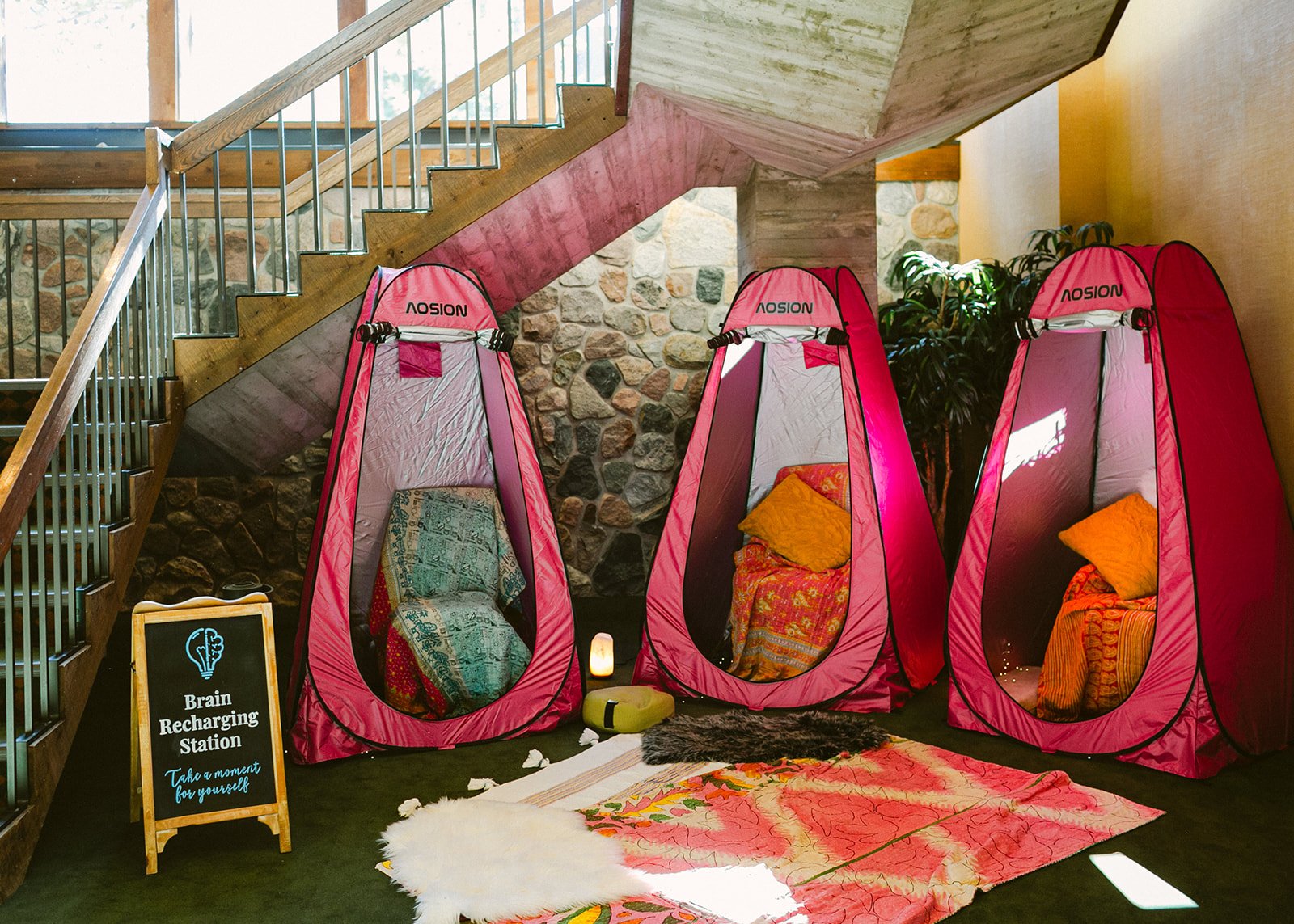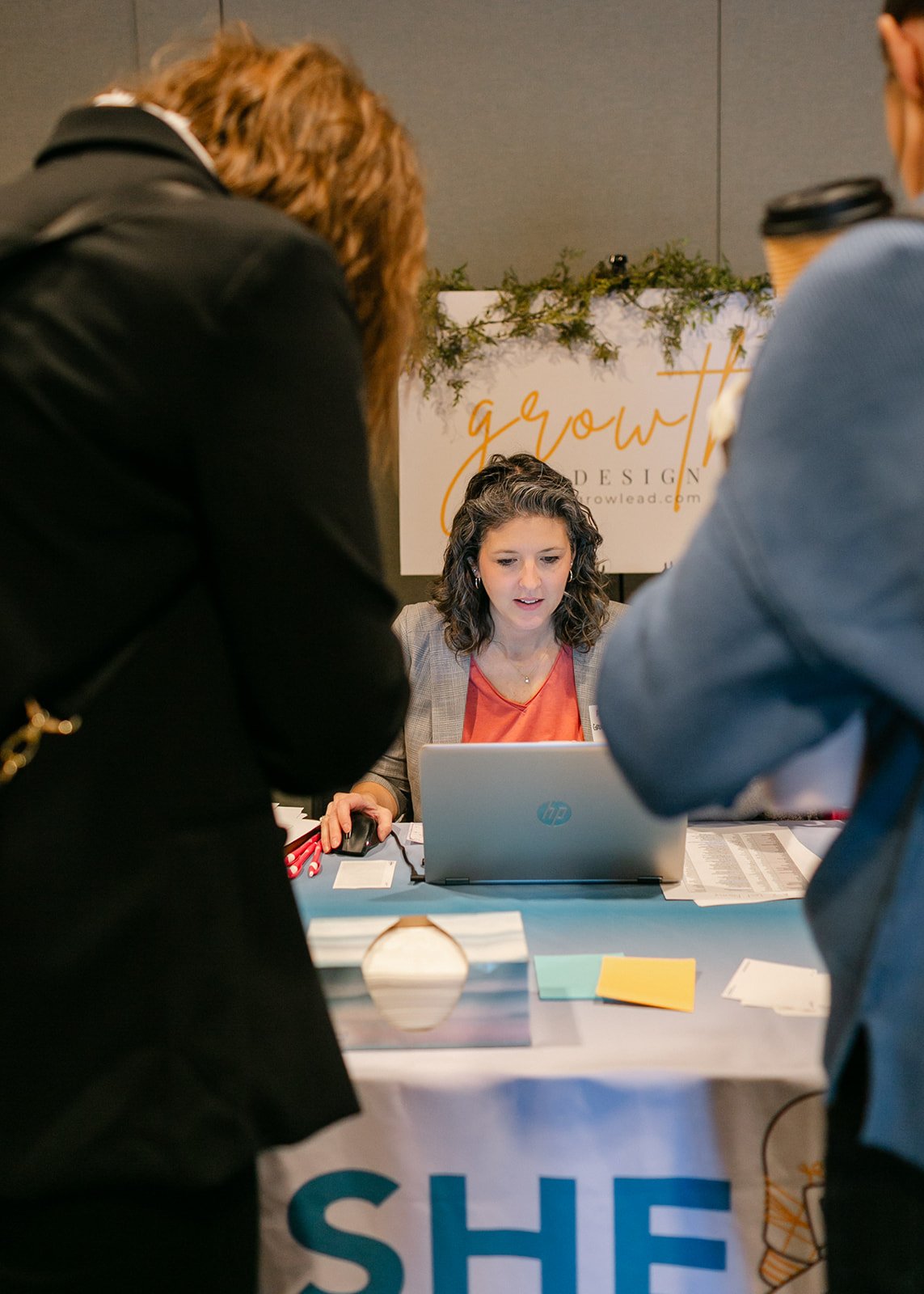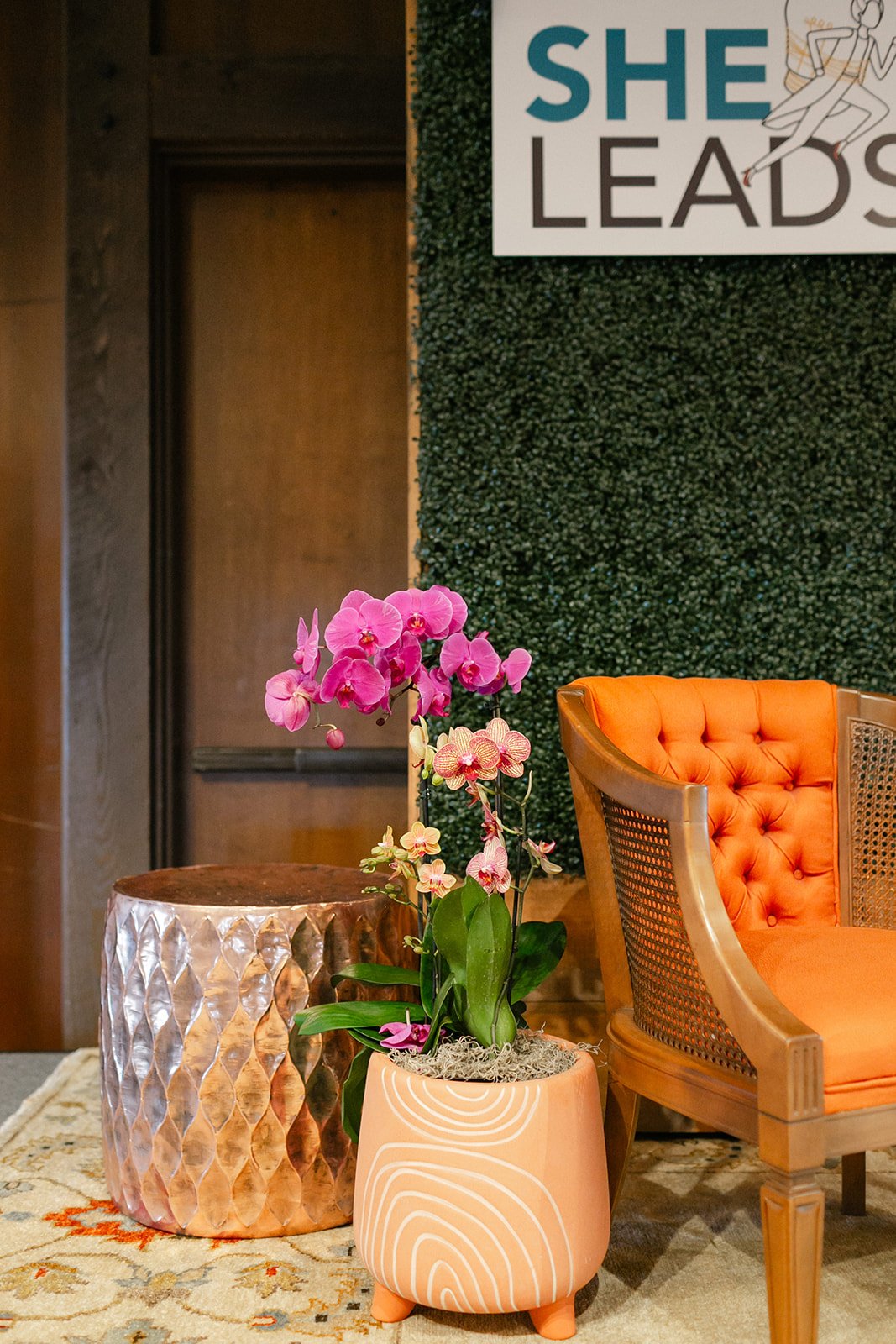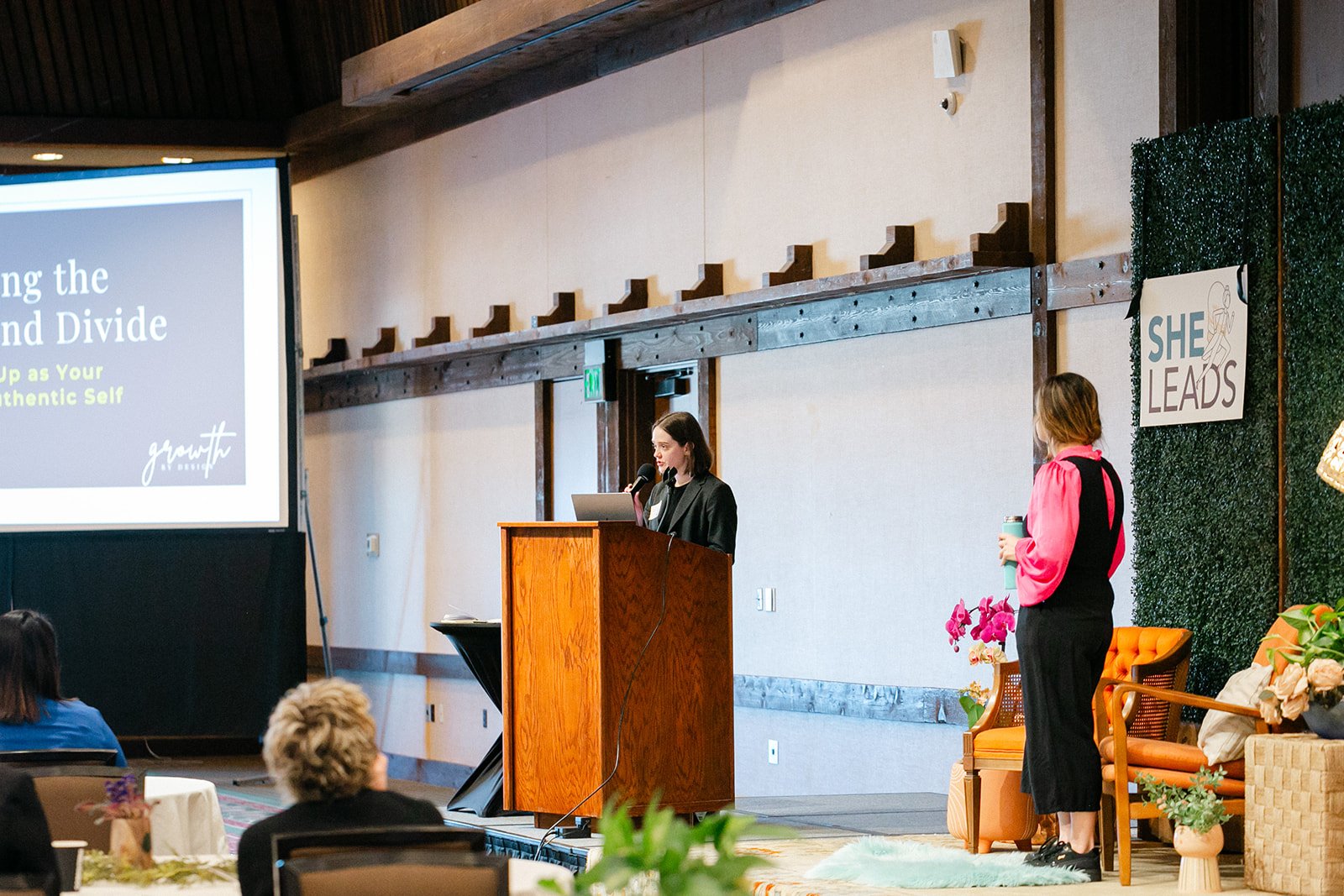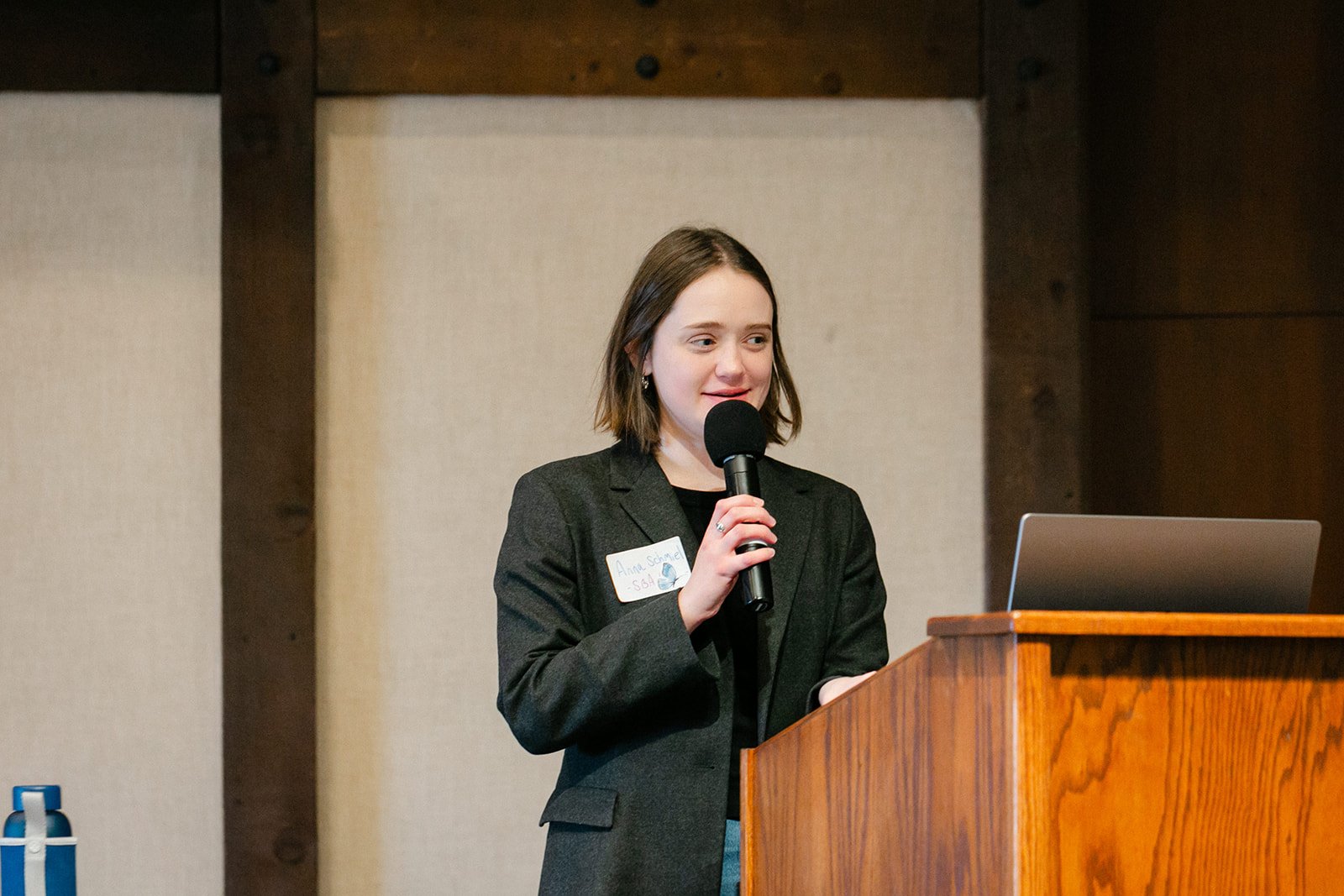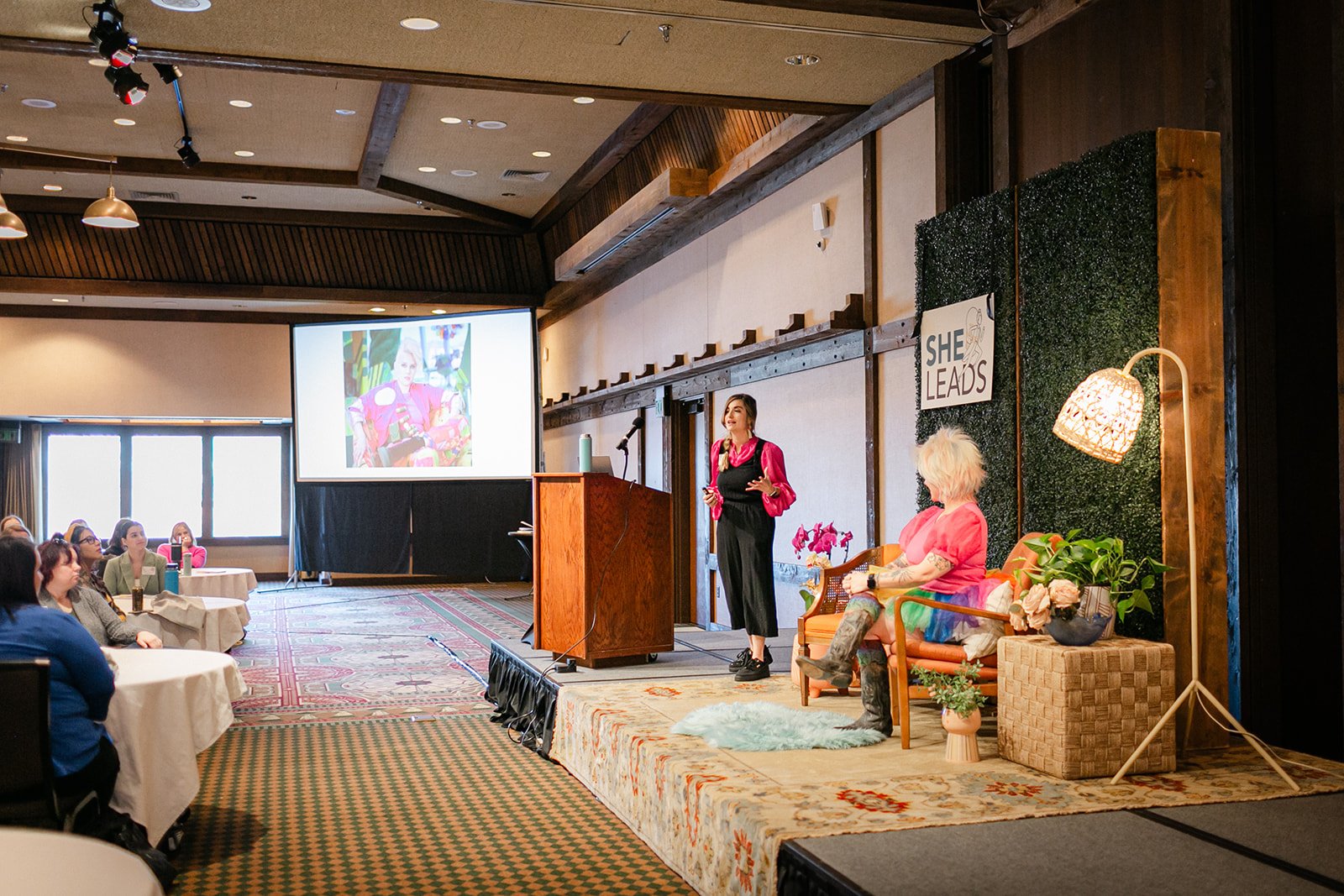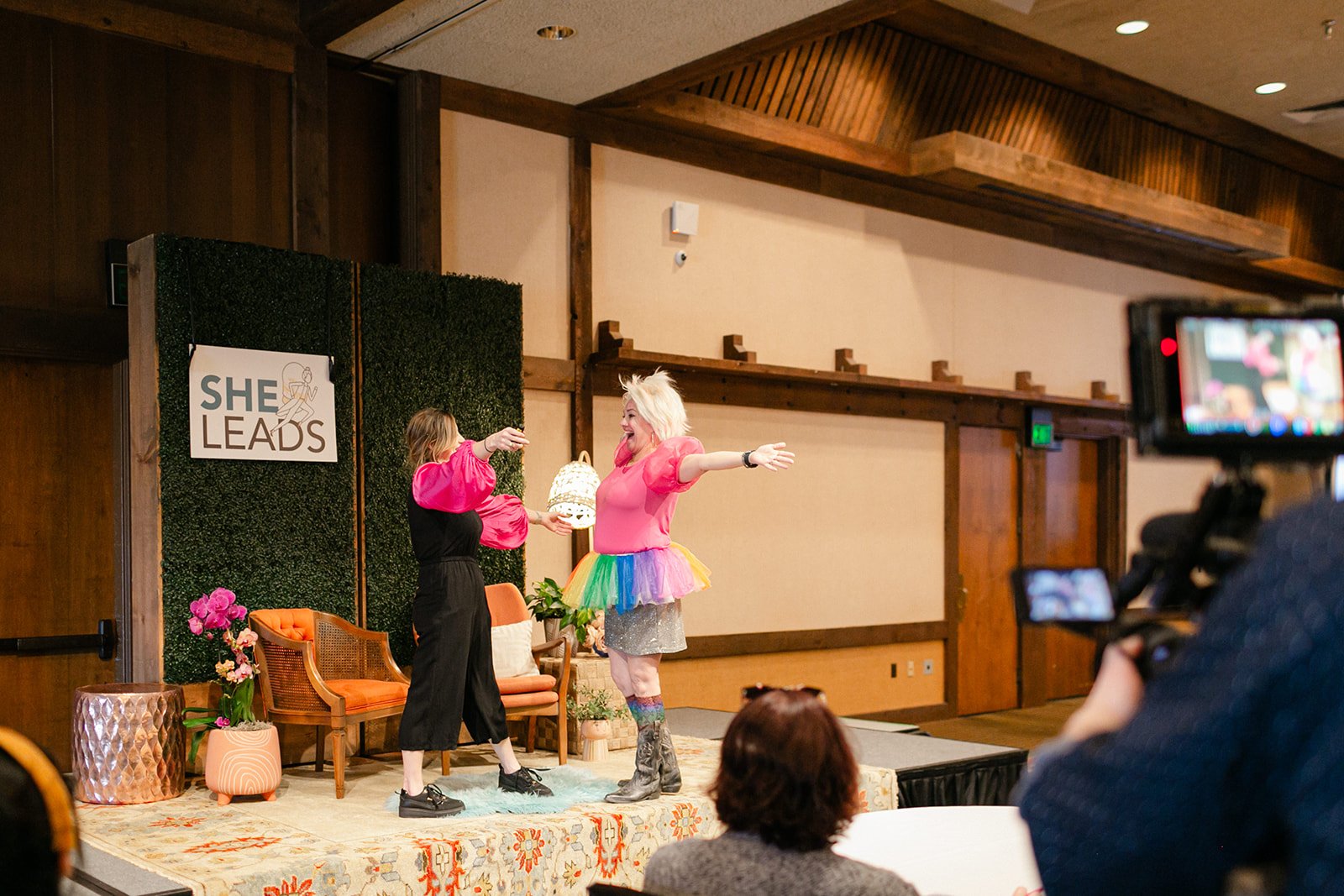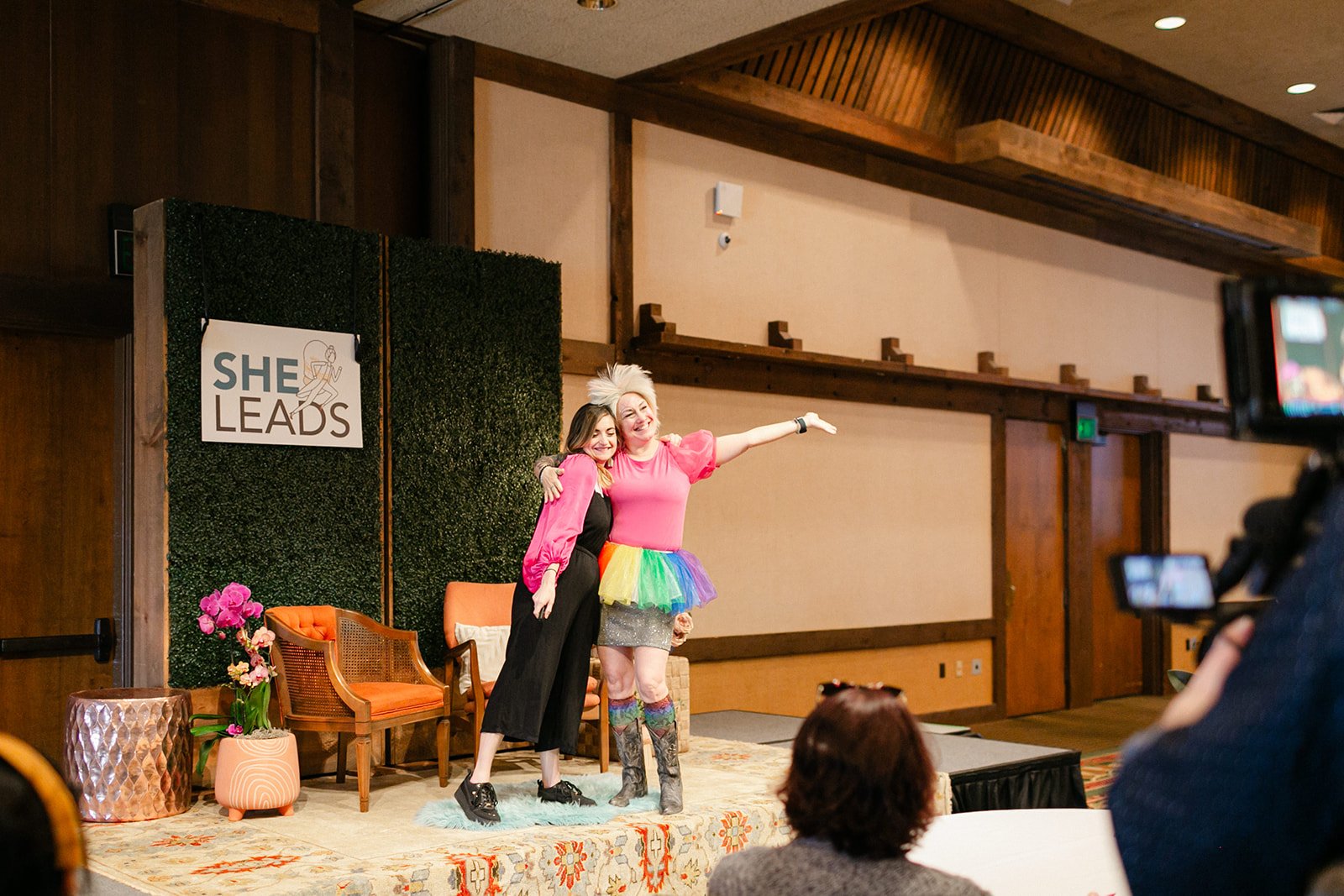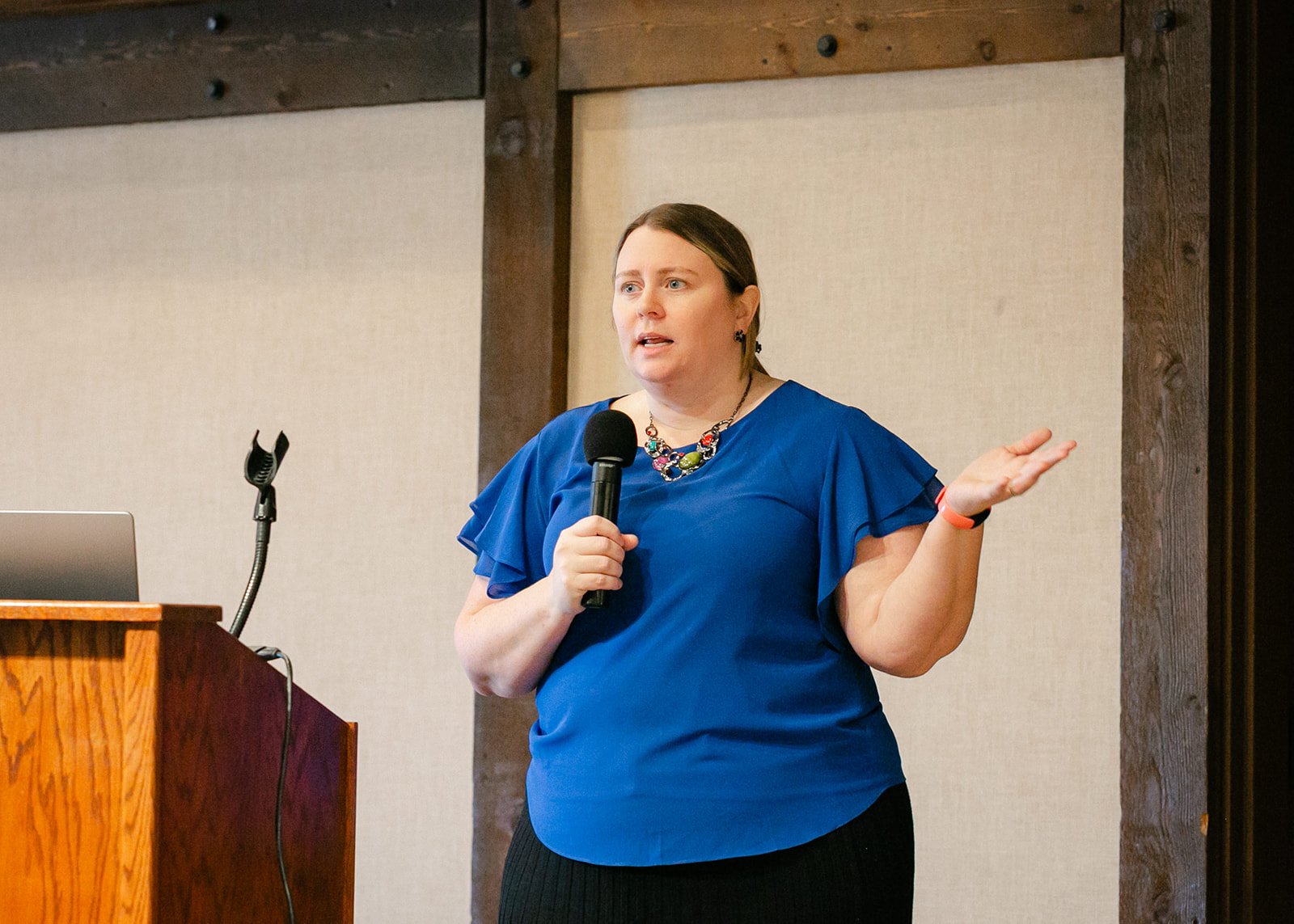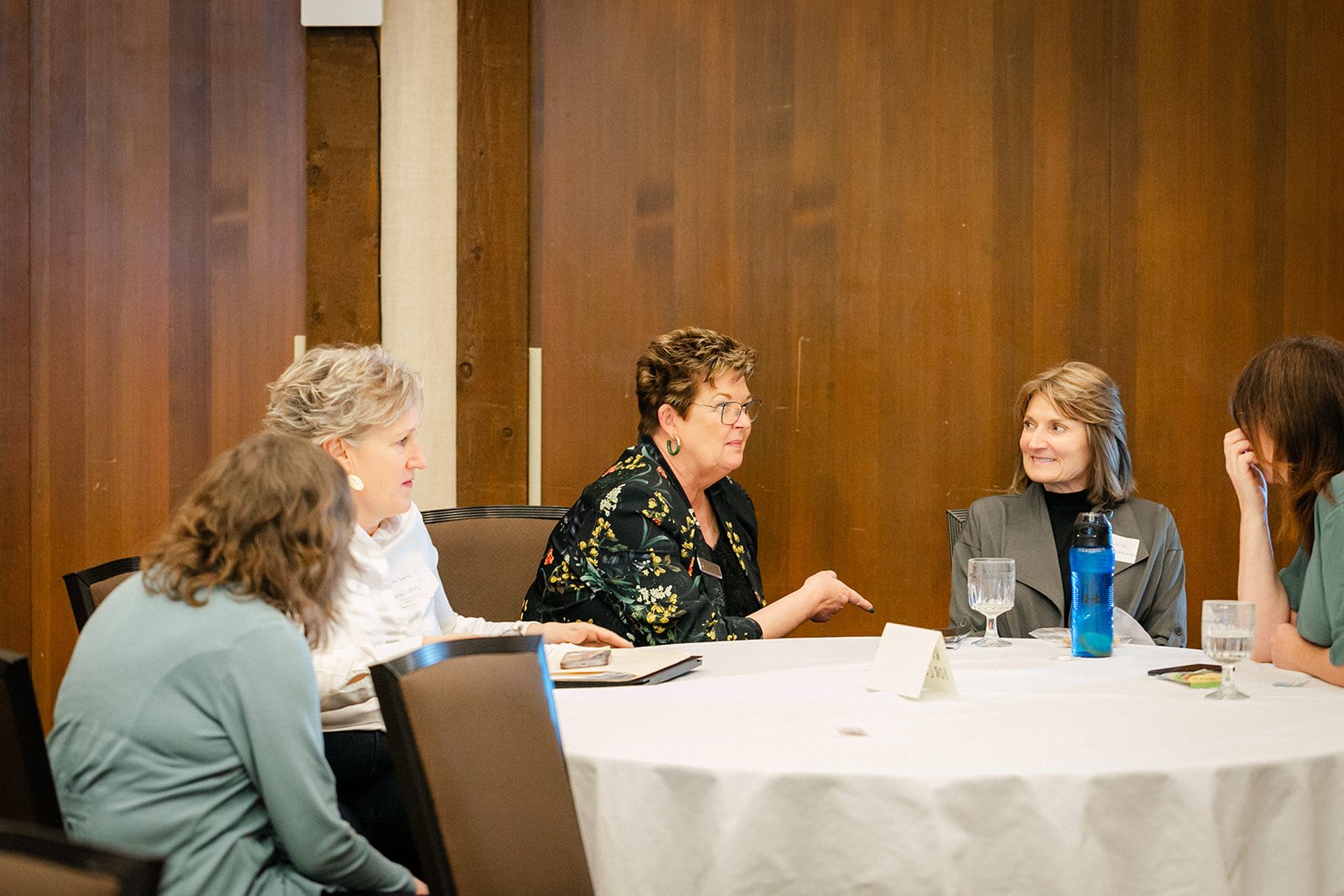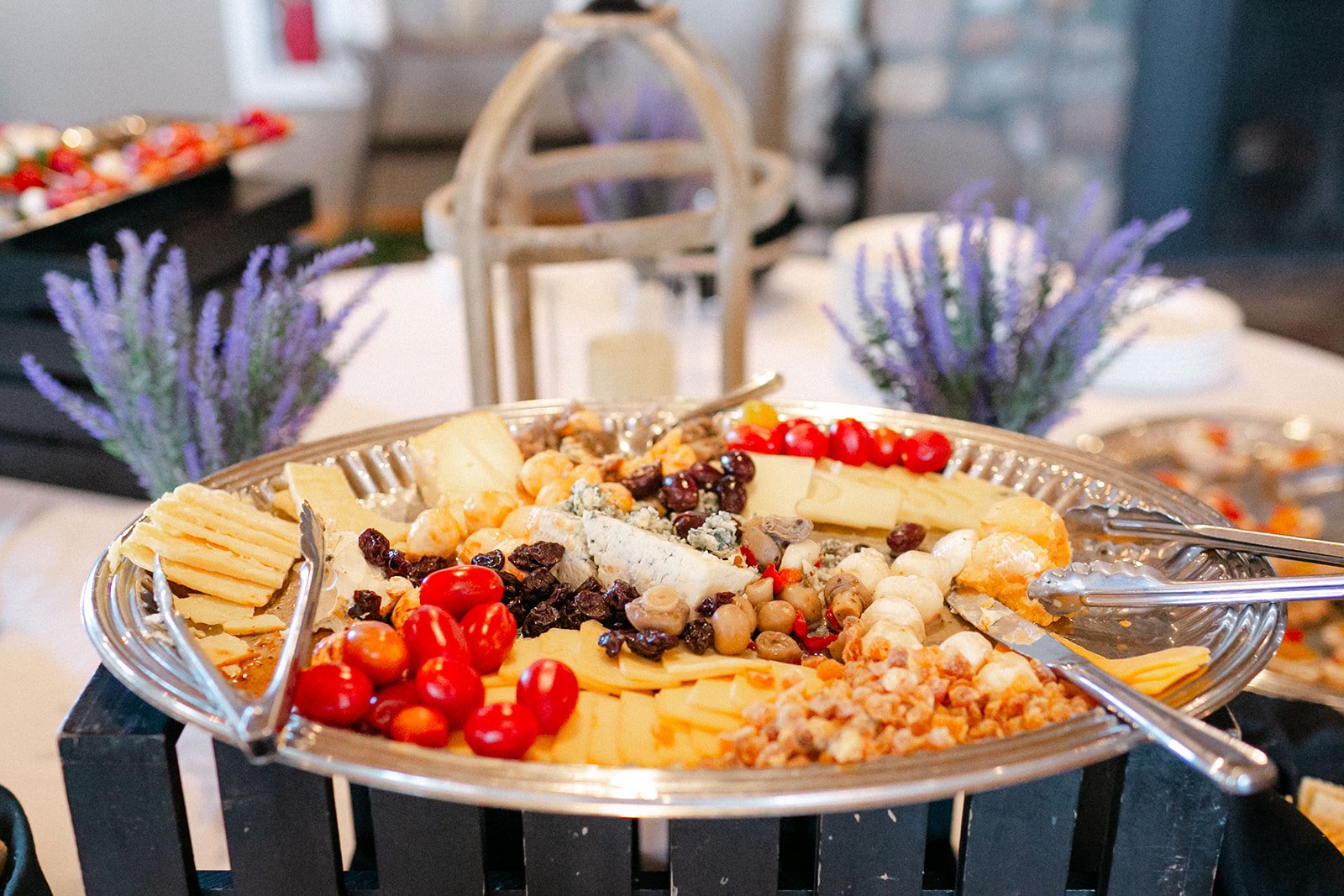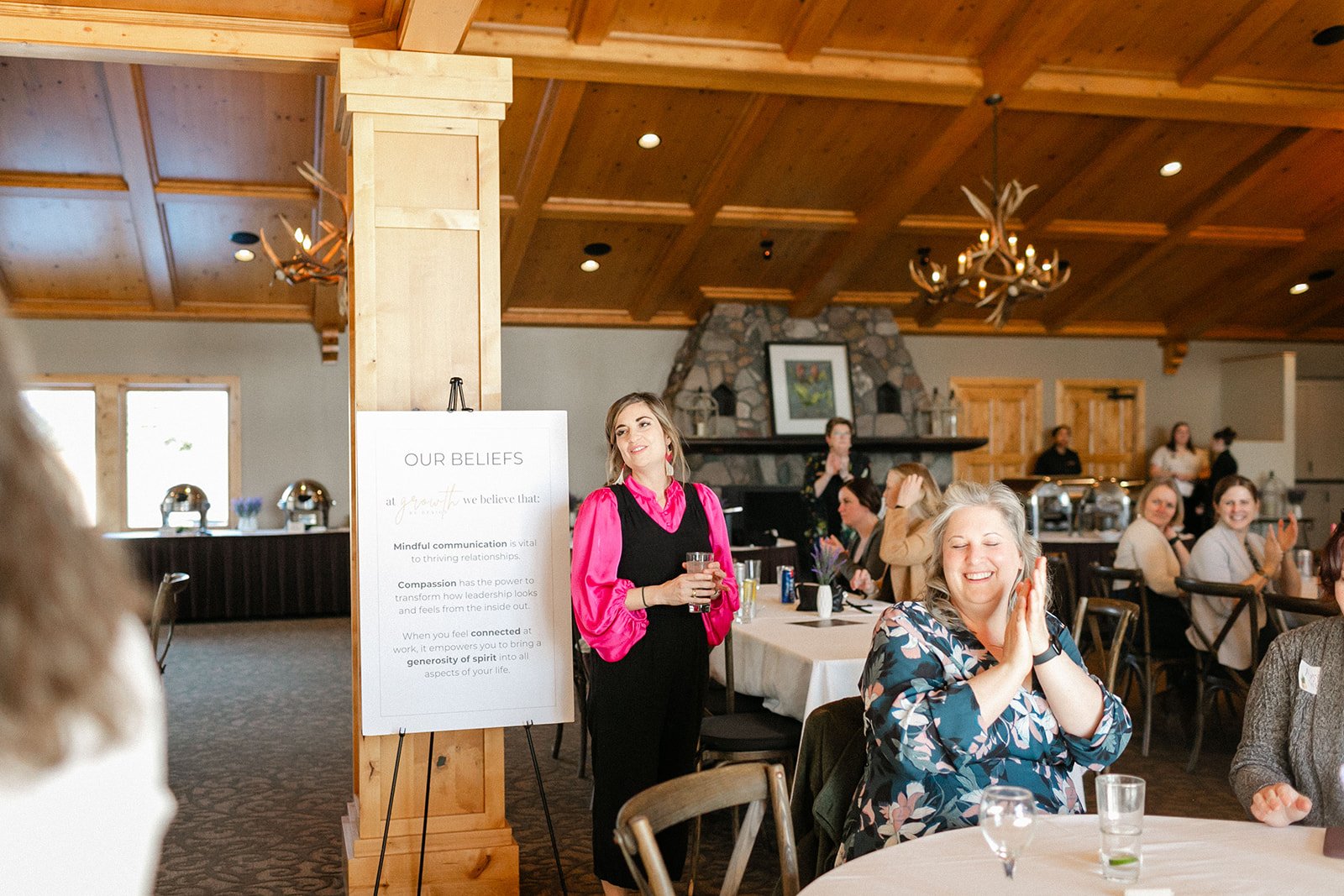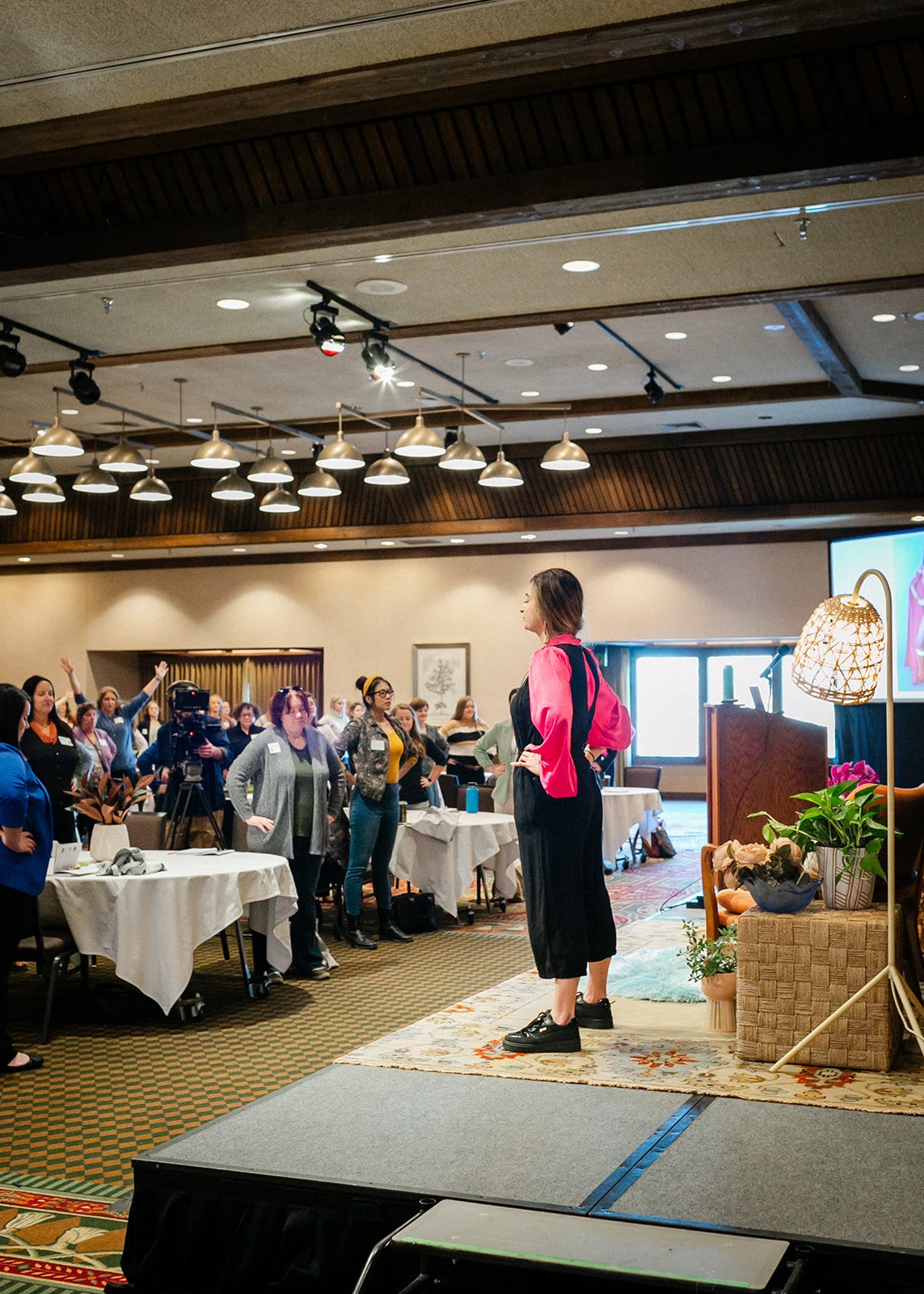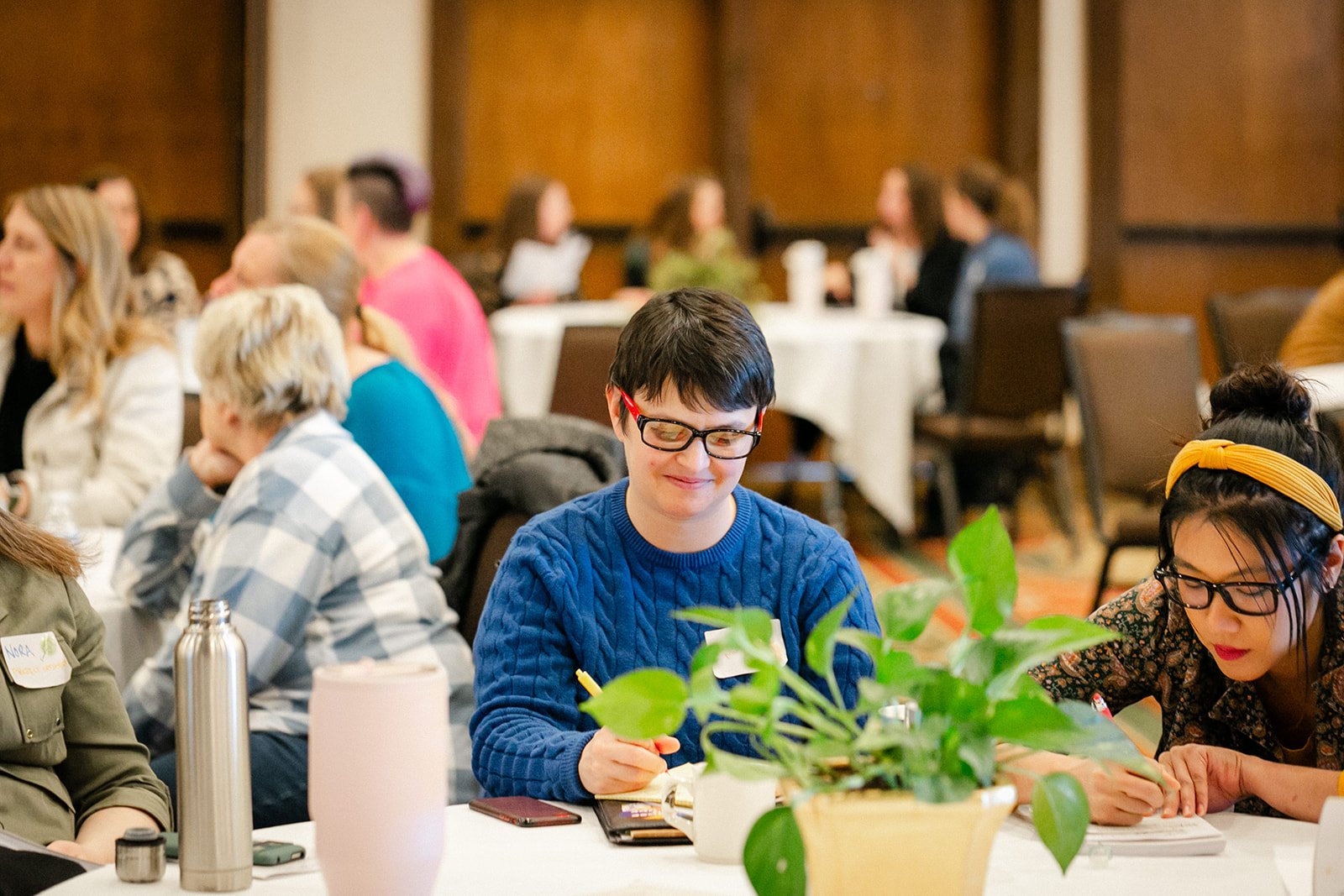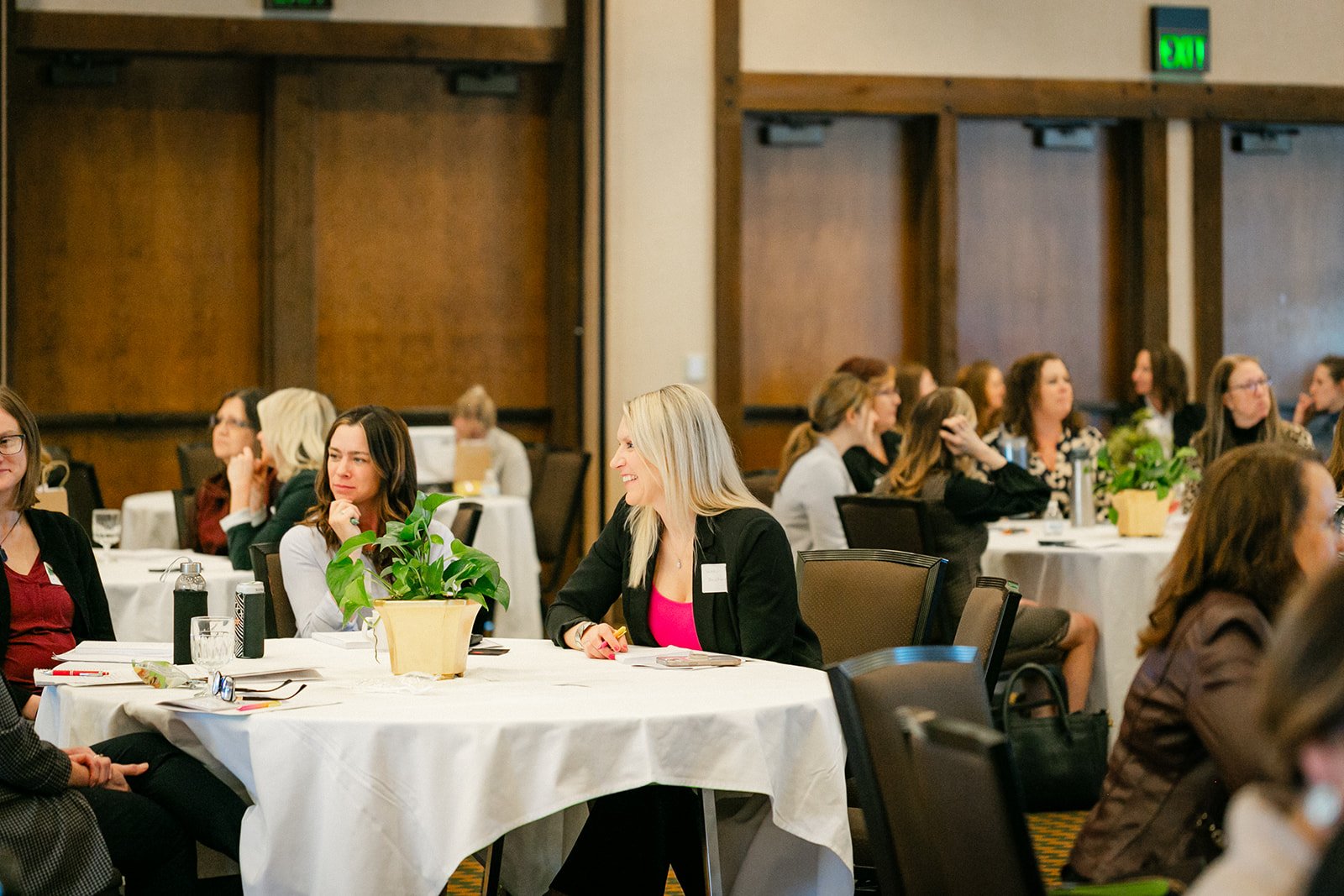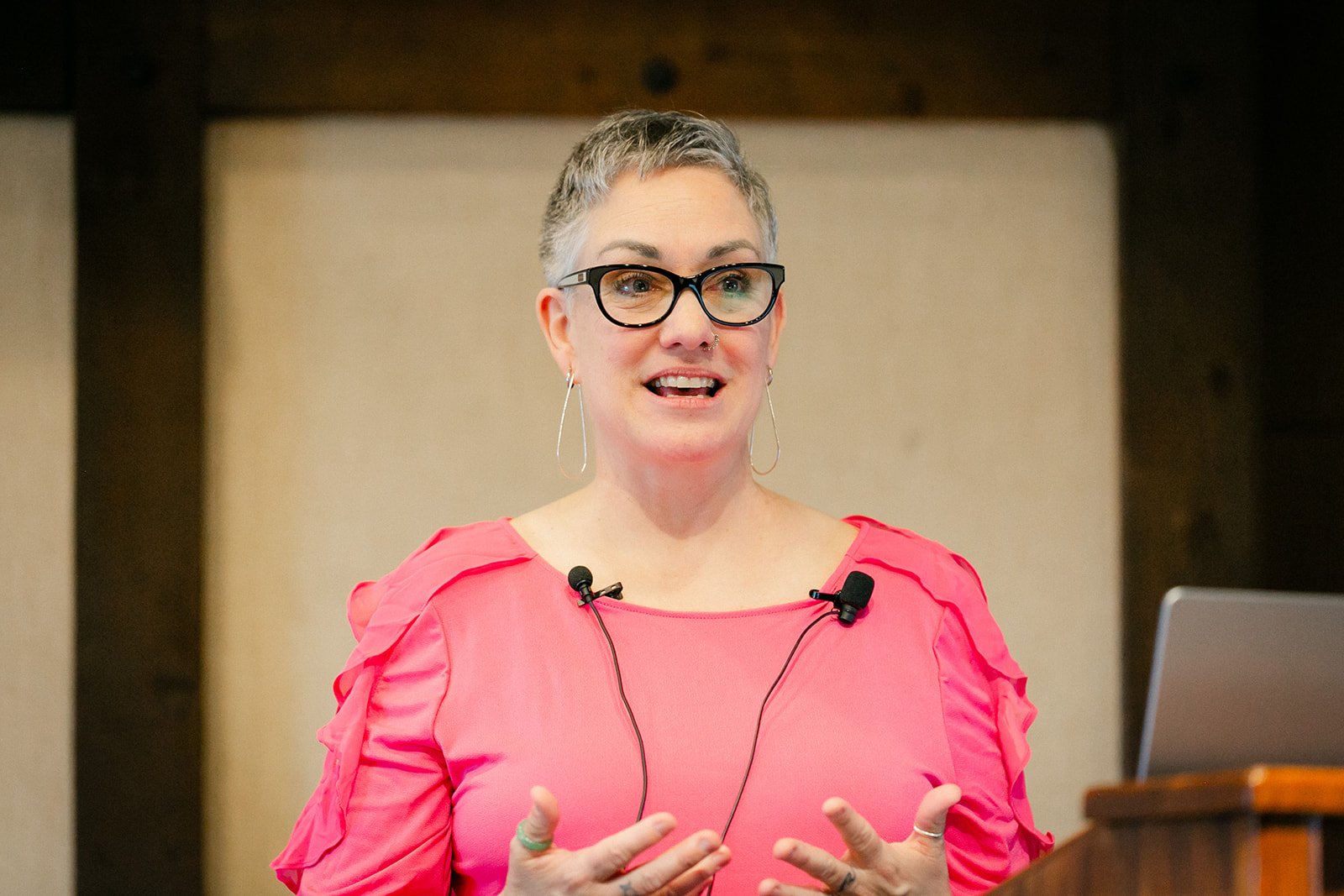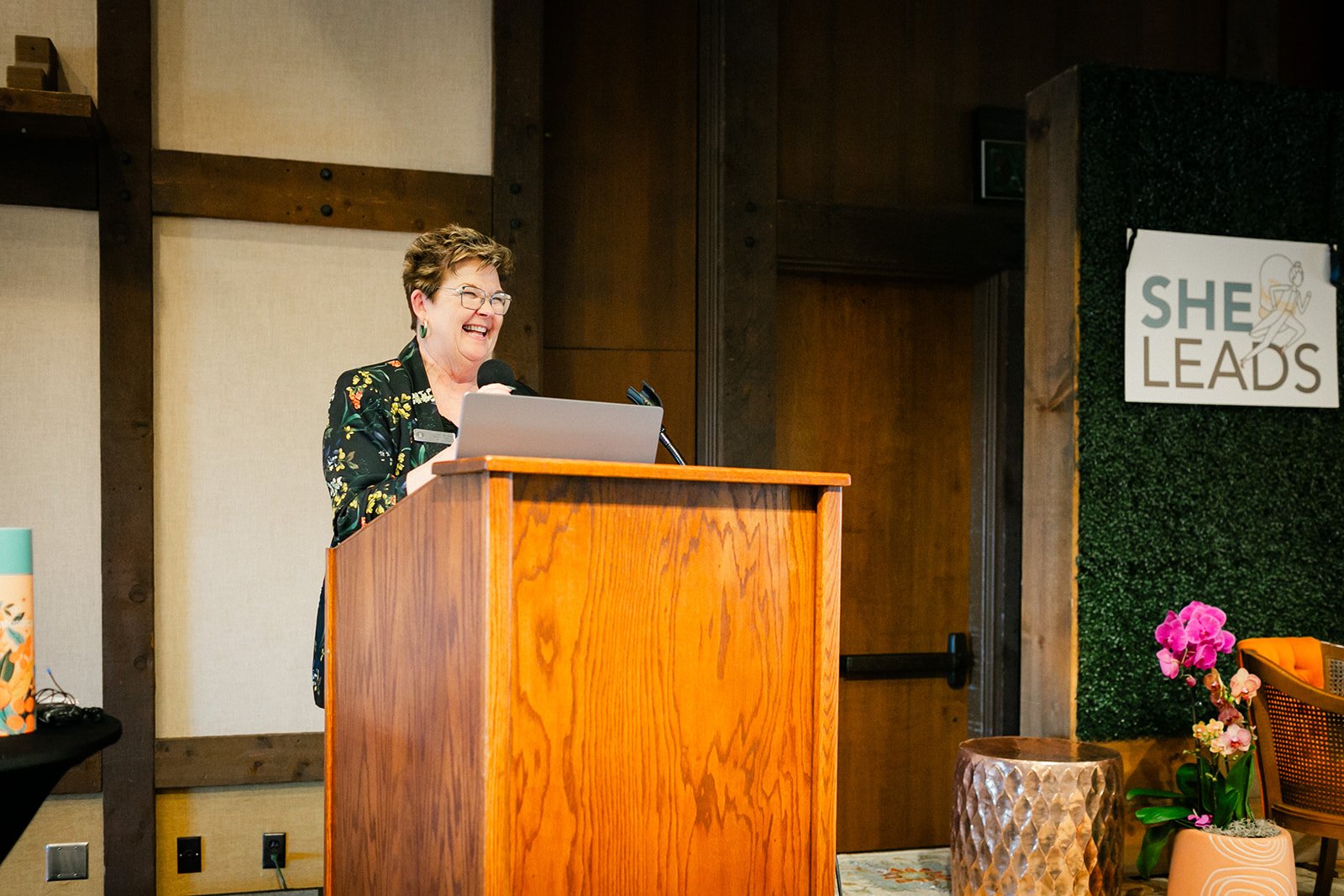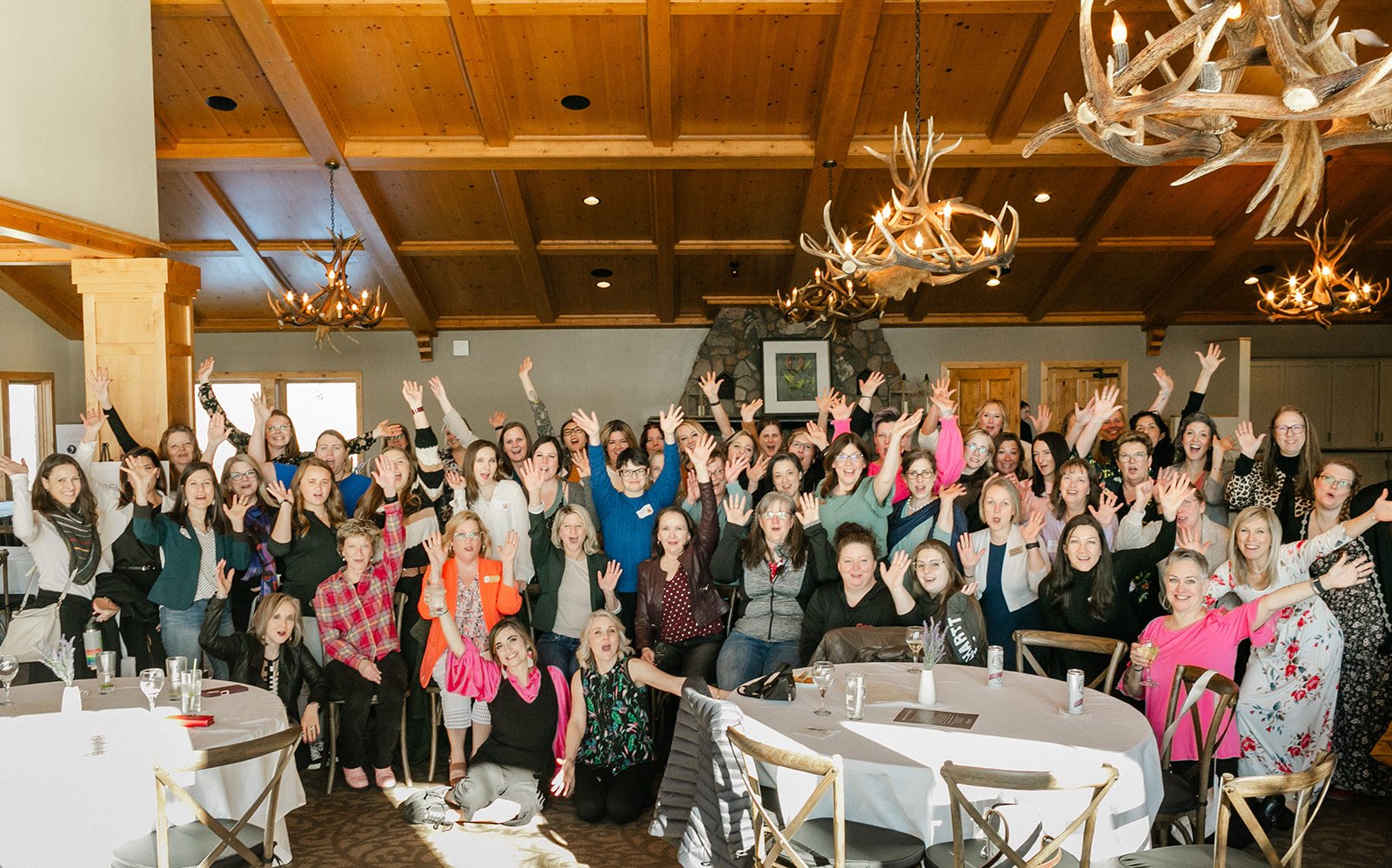In The Afterglow
We're still basking in the afterglow of She Leads 2024, reflecting on a powerful day filled with heart-centered leadership and radical vulnerability that inspired and united us. From the energy of the pitch presentations to Terri Allred’s insightful closing reflections, this event was a profound celebration of women's leadership.
“I felt on FIRE when I got home! So excited and inspired and overflowing with gratitude for a day spent with like-minded and kind women!”
Ya’ll. It’s been 10 days since She Leads and I’m still feeling the afterglow from our time together. The planning committee and I are filled with deep gratitude for the opportunity to gather with every woman who set aside their nagging to-do list and said THIS IS MY DAY TO GROW AND SHINE.
And we did. Together. My opening talk focused on heart-centered leadership—the heart as the seat of courage—and a reminder that you don’t need permission to show up, take up space, and engage from a place of radical vulnerability.
This principle of showing up and shining was embodied in the pitch presentations. It was a joy to witness the creativity, ambition, energy, and courage of the pitch presenters—to be in the room with the presenters and panel experts was to catch the entrepreneurial bug—the undeniable “if I don’t follow this dream I am going to implode” contagion.
In Terri Allred’s closing talk, she asked us all to consider what we will carry forward from She Leads 2024. Besides a renewed hope for our collective future (women in leadership change everything), I am personally carrying forward a commitment to creating more spaces for women to gather together: to dream, to laugh, to strategize, to connect, to hold presence and grace and to give each other a boost to reach as high as the clear blue sky.
A huge thanks to this year’s sponsors for investing in this growing movement. Your generosity and confidence in this work is lighting up hearts and board rooms—where women belong.
AND…Save April 25, 2025 for next year’s She Leads. It’s your sacred day of connection and we cannot wait to incorporate the fantastic feedback from this year. (hint: sleepover, cabins and more intentional opportunities to connect).
In the meantime, shine on, sister.
- Katrina
p.s. Special thank you to Aimee Jobe for her extraordinary artistry in design and photography, we are blessed.
The Real Work of a Leader is Found in the Heart
Whatever feels scary to you, I encourage you to lean into it. With each step of courage you take, your courage muscle will become stronger, and you will find yourself taking bigger risks and longer strides than ever before. Courage comes from a place deep within the heart—the landscape of which is vast and beautiful, and full of unexpected adventures.
Building Your Courage Muscle
Do a Google search for “History’s Most Courageous Women” and you’ll be met with the likes of Eleanor Roosevelt, Frida Kahlo, Rosa Parks, Ruth Bader Ginsburg, Maya Angelou, Amelia Earhart and so many others who have often been dubbed as “fearless.” When we dig deeper into human psychology, we learn that there really is no such thing as a fearless person—because fear is baked into the map of our brain. So then, the attribute we can begin to investigate in these women is actually . . . courage.
Each day we are faced with a series of choices—many of which we make without even realizing it—and so much of our daily life, when we begin to pay quiet attention, is filled with fear-based decisions. But we are not simply drones at the mercy of our ancient brain: We can feel a greater connection with our truest self by bringing a mindful attention into our day-to-day living.
As I’ve been preparing notes for my She Leads keynote, “Showing Up as Your Brilliant, Authentic Self,” I’ve really been thinking about what this means—showing up authentically. And I think it really means showing up fully, letting your WHOLE SELF be seen. This, I think, is especially hard for women in leadership positions.
Contemporary sociologist and speaker Dr. Brene Brown has received global attention for her commitment to educating us on both the value and strength of vulnerability in leadership. In her book, “The Power of Vulnerability,” she writes: “We associate vulnerability with emotions we want to avoid such as fear, shame, and uncertainty. Yet we too often lose sight of the fact that vulnerability is also the birthplace of joy, belonging, creativity, authenticity, and love." Dr. Brown has devoted her life’s work to dispelling the misconception that vulnerability equals weakness, claiming that courage is the most precise measure of change.
Returning to the list of courageous women, we can consider that not only did they feel fear, but that there came a moment in each of their lives (likely many moments) when their need to express their ideas, concerns and emotions was so big, it won the fight against fear. Courage and fear entered the ring—and courage won.
I don’t think courage is a personality trait we are born with. I believe it is a skill—just like riding a bike, listening deeply, or playing the ukulele—that we can actively cultivate in ourselves. One way to do this is to do something every day that gives you a slight discomfort in your stomach. My business partner Kristi uses the language of “do it scared” (stay tuned for her upcoming blog post on this). For you, this might be picking up the phone to do a sales call. Or maybe it’s being outwardly curious with the cashier at the grocery store, or perhaps it is signing up for that tap dancing class you’ve been wanting to go for since you were in 2nd grade.
This weekend, I auditioned for the Duluth Playhouse’s “What She Said” New Play Festival. It included a memorized monologue of my choosing. I chose a comedic option—as a rookie adult actor, this is something I’ve never tried before. Leading up to my 4:00 pm audition slot, I was beside myself with anxiety. I had to run outside in 20-degree weather to get that dull, achy dread to go away long enough for me to get myself dressed for the audition. Was it hard? Yes. Without doubt! But the absolute joy in hearing the laughter of the directors and the sense of accomplishment that came because I simply WENT FOR IT—despite my body and brain telling me not to—cannot be reproduced by flipping through Netflix or scrolling through leadership reels on Instagram.
Whatever feels scary to you, I encourage you to lean into it. With each step of courage you take, your courage muscle will become stronger, and you will find yourself taking bigger risks and longer strides than ever before. Courage comes from a place deep within the heart—the landscape of which is vast and beautiful, and full of unexpected adventures.
I can’t wait to share more of my story at the She Leads Conference on April 4 and how you can claim your birthright of leading—and living—fully. Until then, keep that ember of a dream in your heart lit.
With Heart,
Katrina
p.s. As a reminder, you don’t need anyone’s permission to exercise your courage. But if you feel like you do, consider this your official permission slip.
p.p.s. I’ll leave you with words by spiritual teacher and author, Marianne Williamson.
Our Deepest Fear
“Our deepest fear is not that we are inadequate. Our deepest fear is that we are powerful beyond measure. It is our light, not our darkness that most frightens us. We ask ourselves, 'Who am I to be brilliant, gorgeous, talented, fabulous?' Actually, who are you not to be? You are a child of God. Your playing small does not serve the world. There is nothing enlightened about shrinking so that other people won't feel insecure around you. We are all meant to shine, as children do. We were born to make manifest the glory of God that is within us. It's not just in some of us; it's in everyone. And as we let our own light shine, we unconsciously give other people permission to do the same. As we are liberated from our own fear, our presence automatically liberates others.”
― Marianne Williamson, A Return to Love: Reflections on the Principles of "A Course in Miracles"
Life on Your Terms: Knowing when to say yes
If you are living from your truth, not everyone is going to like you. But the more you begin to embrace your truth in action, the more the right people for your path will appear (and your relationships will be symbiotic—ones of mutual benefit toward your highest selves).
Despite being a successful entrepreneur and mother of two who has designed a life on my own terms, I am a recovering people pleaser. I can’t remember when exactly it began, but somewhere along the way I developed a maladaptive tendency in my interactions with others to disregard my feelings, needs and beliefs to make the people around me feel comfortable. Don’t get me wrong, at times this has served me well, such as when I waitressed at a family restaurant in high school or when I am working to create a safe space for everyone as a facilitator in a strategic planning session. This “fawning,” however, was also holding me back. Before I realized I needed a mindset makeover, saying no or choosing to simply meet my own needs over the needs of others would manifest itself as a low-level sense of aching dread and guilt. For me, people-pleasing showed up as covering up my talents simply because I had the core belief that shining my light would make those around me uncomfortable.
I remember the exact moment when my therapist looked me square in the eye and asked, “Katrina, is it your job to make everyone else happy?” I recall being genuinely dumbfounded.
But the underlying lie/belief pattern I was telling myself was, “If I always say yes to whatever is asked of me, then everyone will like me.”
Reality check. If you are living from your truth, not everyone is going to like you. But the more you begin to embrace your truth in action, the more the right people for your path will appear (and your relationships will be symbiotic—ones of mutual benefit toward your highest selves).
Knowing yourself—what makes you special/your unique offering to the world—is foundational to living a designer life. And we simply cannot understand the fullness of our gifts if we are focused on making everyone around us happy. It is by making manifest the dormant life inside.
Imagine a rosebud looking around the garden asking others what it should become!
One of the most predictive characteristics of a successful entrepreneur is the ability to radically and confidently follow one’s own heart and intuition. But in order to truly know ourselves, we have to sharpen our discerning abilities about how to spend our super precious time.
At the 2024 She Leads event on April 4, we are inviting women to investigate their own brilliance, particularly as it relates to wholehearted leadership. If we are to live with intention and embrace our vocational purpose, then we also need to be clear about what to say no to—because every time we say yes to something we don’t really want to do, we are contracting back into ourselves and putting up a superficial wall between us and the world we want to engage in.
Please don’t misinterpret the idea of designing life on your terms as self-indulgent narcissism. It is quite the opposite, actually. When you are considering a new venture or even something as small as a coffee, remember that people pleasing steers you off course AND prevents you from having an authentic connection with the person you are trying to please. I believe the word for that is . . . counterproductive!
When you are operating at your peak authenticity, you are bringing more to the people you love by fertilizing the unique seed ready to be awakened inside of you.
YOUR AUTHENTICITY FILTER
OK. So now for the practice. Start a list of questions that can help you decide whether or not something is worth your time. Consider your goals for the year, both personal and professional. Consider your purpose, your work, your family. Then see if you can narrow it down to the 3 winners. You can always adjust later.
Here are the 3 that I am currently using:
Will this environment provide what I need to feel good?
If I say yes, am I moving closer to my personal goals for the year with the time I will spend?
Will this make a deposit in my resource bank (health, financial, educational, etc.)? If not, will it have a positive impact on people I care deeply about?
If the request you’re considering doesn’t hit all three boxes, then the answer is an easy “no, thank you,” (or maybe, “let me connect you with someone else who I think could be a better fit”).
IN PRACTICE
I encourage you to try this checklist method for the next 2 weeks with every “non-essential” way you consider spending your time when asked by a friend, colleague or family member and see what happens. It might feel clunky and uncomfortable at first—and you may even notice that this new boundary can create a few wrinkles in your relationships.
I’ll close with a quote by Brene Brown: “Authenticity is a collection of choices we have to make every day. It is about the choice to show up and be real. The choice to be honest. The choice to let our true selves be seen.”
In Gratitude,
Katrina
p.s. This list also works when you have been feeling the quiet, yet growing itch to let something go. Sometimes it just takes running it through your authenticity filter.
p.p.s. This March I get to visit Casa Azul, the original home of Frida Kahlo near Mexico City. If you don’t know Frida and her story, head over to PBS for their series, “Becoming Frida.” As a young, disabled, queer female artist, she truly lived life on her terms.
5 Reasons a Feasibility Study Can Make You Wildly Successful in Your Next Capital Campaign
Photo by Chris Linder
For decades now, a philanthropy feasibility study has been heralded as a necessary step and best practice for organizations preparing to launch a major capital fundraising effort. While the process is probably best known for ascertaining a realistic capital campaign MN organizations are seeking, a well-executed study can offer a variety of foundational benefits that go far beyond the campaign goal discussion.
They include:
1) Engaging Your Board and Staff. A feasibility study calls upon your board and staff to think creatively and strategically together to build a preliminary case for support to be tested during the campaign. It also asks them to help identify and qualify prospects to be interviewed for the study. Further, when the study is completed and delivered, it provides a shared reference point to help your team understand and align around your organizational position. These experiences create an opening for your team to bring forth their perspectives and talents in a meaningful environment.
2) Creating Your Early Tribe. A study includes 1:1 interviews with donors, volunteers and other stakeholders who are likely to contribute to your campaign. Giving this group of treasured supporters a chance to connect early and offer their feedback through a study provides an authentic experience and reminds them that they are a valued part of your organizational universe. This, in turn, helps to plant the seed with key potential volunteers who may be interested in serving in a leadership position on your board or nonprofit capital campaign steering committee.
3) Cultivating & Stewarding Your Donors. A feasibility study is a natural and trusted way for donors to connect or re-connect to your mission. The process of inviting donors in to share their opinions about your proposed project with an experienced consultant is a meaningful touch point within your organization’s donor management strategy. Consider your feasibility study as the first cultivation visit for your leadership and major donor prospects. The interview, if done right, readies donors for a major ask when you are ready to launch the silent phase of your campaign.
4) Giving a Hard Look at Your Reality. The objective feedback that nonprofit consultants gather during a feasibility study can help leaders better understand your reputation, internal conflicts, opportunities and environmental threats. This may include learning about other capital campaigns (competition) in your community, excavating employee barriers to engagement in your nonprofit fundraising program, and identifying new options for your project you may not have thought about. A study not only informs your capital campaign planning but can help set the stage for strategic planning or other high-level discussions about overdue issues that have been lingering under the surface.
5) Designing a Capital Campaign that is More Likely to Succeed. Finally, the most obvious reason for conducting a feasibility study is to inform the design of a successful capital campaign. A well-written study report comes complete with recommendations on:
- Whether or not to proceed with the campaign
- What’s possible/campaign goal amount
- What to emphasize in your case statement
- How to position the project within your campaign marketing
- Volunteer recruitment and leadership
- Staffing and internal infrastructure
- Timing and competitors
- Campaign branding and key messaging
- A timeline and concise plan for moving forward (or the changes that are needed to your project scope or goal based on the study findings).
Ultimately, a feasibility study can be thought of as the first phase of a wildly successful capital campaign. A significant investment? Yes. But one that’s worth it if you are serious about increasing the impact of your mission.
If you’re looking for a trusted expert to be your guide and craft a comprehensive, highly tailored feasibility campaign for your organization, reach out for a complimentary 30-minute conversation!
